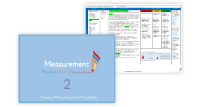Mass, Capacity, Temperature - Temperature activity - Presentation

Maths Resource Description
The concept of temperature is a fundamental element in the study of measurement, and it is the focus of a particular lesson designed for children to understand how to measure and describe temperature. The lesson begins with a discussion about what temperature means and the vocabulary used to describe it, such as 'hot', 'cold', 'boiling', 'warm', 'Celsius', and 'freezing'. The term 'Celsius' is highlighted as a unit of measurement for temperature, and children are asked if they are familiar with it and what it signifies. The lesson also includes real-world examples, such as water boiling at 100°C, which is a common occurrence when making a cup of tea, and water freezing at 0°C to make ice lollies. Children are encouraged to think about what the normal body temperature should be.
Further into the lesson, children explore the different types of thermometers and their uses, such as a garden thermometer for measuring outdoor temperature, a medical thermometer for checking body temperature, and a digital thermometer for precise measurements. They learn how the liquid in a thermometer rises and falls with temperature changes, and they practice reading temperatures on various thermometers, ranging from 5°C to 25°C. The main activity challenges the children to measure temperatures in different locations, order them from coldest to hottest, and think critically about what they observe. For instance, they examine temperature recordings over two weeks, determining which week was warmer, identifying the coldest and hottest days, and calculating temperature differences. The lesson concludes with reasoning exercises that encourage children to deduce information from temperature data and to engage in practical tasks such as creating a temperature chart over a period of time.

